Healthy soil begets healthy forage crops, the kind deer search out and camp out on. Whether you are an experienced food plotter or starting your first season, proper soil management is a must for productive food plots. After selecting your hunting site, improving your soil is one of the biggest influences on your food plot (and hunting!) success. After all, everything that happens above ground depends on what's below.
Here's how to caretake your soil which, in turn, will fuel your food plots for better herds and hunts.
Get to Know Your Soil
Like an annual physical for your land, a soil test takes the pulse of your ground's ability to support plant life. You've got to know the status of your soil before you can make any meaningful changes. Here's a 4-6 step plan (depending on your experience and interest level) to assess your soil and best support any crop you choose to grow.
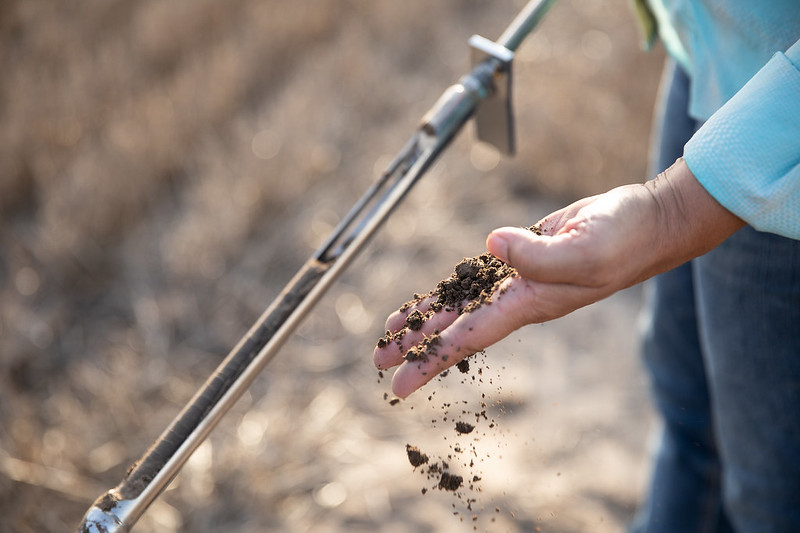 Photo courtesy of the United Soybean Board on Flickr.
Photo courtesy of the United Soybean Board on Flickr.
1) Take a soil sample – A lab-evaluated soil sample will report your current soil pH and any nutrient deficiencies. These metrics provide objective and decisive direction on how to amend your soil for your specific crop and location. Using an advanced soil sample kit will additionally report your soil’s micronutrient levels.
Each essential nutrient plays a specific role in plant development. The better you can dial these in, the better your crops will grow and provide nutritious forage - which, believe it or not, deer can taste!
2) Review current nutrient levels – If you have previous soil test reports, compare the changes in your results. You‘ll see what impact (positive or negative) previous crops have made on your soil. It will also help determine if, and how much, previous fertilizer applications improved your soil fertility.
3) Formulate a soil balancing plan – Based on your soil test results, your soil type (clay or sand), and which crops you intend to plant, develop a plan to supply the soil nutrient requirements on your test report. Organic materials (like compost or manure) and synthetic fertilizers have vastly different nutrient profiles. Do the math to meet the recommended amounts on your report. Then plan to monitor and tweak these levels over time.
4) Plant forages that meet your goals – Are you planting for forage or soil improvement or a hybrid? Do you want perennial or annual crops or both? What crops are best suited for your plot’s soil? What season are you trying to fill? Do you need warm-season or cold-tolerant crops? These answers will shorten the list of crops to consider.
For you over-achievers, let’s go two steps further...
5) Take plant tissue analysis after 60 days – Like a soil test checks your soil’s nutrient levels, a tissue analysis reports the nutrient composition of your crop, like sugar levels and other nutritional factors. Tissue analysis can reveal deficiencies that are compromising your forage quality. Typically, what the plant tissue is low on your soil is also low on. It’s further reinforcement to address these missing elements. A state Extension office or private lab can provide the tissue analysis service.
6) Measure your yield – A high-yielding food plot is a return on your sweat equity. Measuring forage yield quantitatively demonstrates two things.
- Nutrient balance - High forage yields are a clear sign that you've nailed your soil nutrient levels. If the output is only mediocre, you've got work to do. Keep assessing and improving your soil while you evaluate your seed selection.
- Seed quality - Low forage yield could be a sign that your seed mix is subpar. Make sure to plant improved forage varieties of chosen crops (not agricultural varieties). Read seed labels closely so that you know what you're buying. A cheap seed mix could be full of low-quality filler or, worse, weed seed that will plague you for seasons to come.
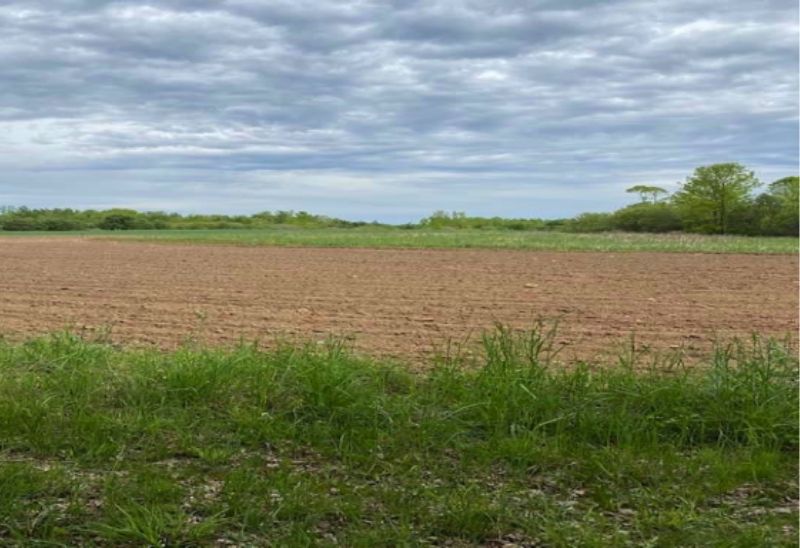
Start and Maintain Annual Soil Records
Keep tabs on your soil. Even, and especially, if you're new to growing food plots. Watching the changes in your soil sample results will tell you how your efforts are working. Think of it as your soil scorecard.
Sample food plot soils annually in the fall after growth is finished or early spring before new growth begins. Annual soil sampling is a crucial step. You need to know which nutrients last year's crop consumed from the soil. Regular soil analysis will confirm which nutrients you need and how much to add. This objective information will give your next crop a solid start.
As your soil records accumulate, start a benchmarking chart to compare soil test results from year to year. It is valuable to take notes on crop performance and compare year to year how your soil balancing efforts are going. If you're not making progress, you can seek expert help with data in hand.
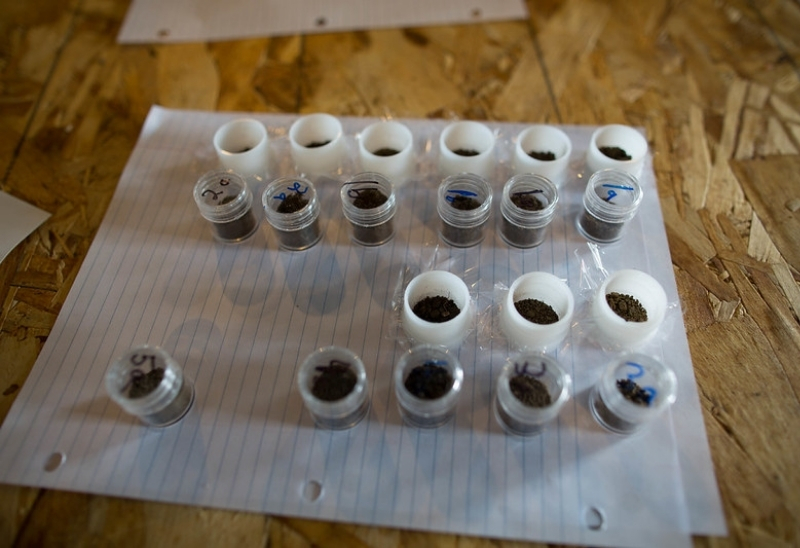 Photo courtesy of Joi Ito on Flickr.
Photo courtesy of Joi Ito on Flickr.
Learn To Appreciate pH
Soil pH has subtle but powerful effects on crop production and palatability. Low soil pH doesn't exert a dramatic initial impact on plant growth. But three to five weeks after planting, soil acidity will prevent seedlings from effectively using available soil nutrients. That's when you'll start to see stunted growth, which will ultimately limit your overall forage production. You will have plant growth, but you might only reap one ton of forage per acre from a seed blend that should produce over two tons.
The bad news of soil acidity doesn't end there. If your crops can't uptake their nitrogen, phosphorus, and potassium (N-P-K) requirements, they will contain less protein and be deficient in sugars. Deer are selective browsers that consume what they do for a reason. Growing high-quality forages that deer desire starts with well-managed soil.
Plant nutrient deficiencies also increase plant disease and insect pressure. Insects are drawn to feed on vulnerable, unhealthy plants, and deer learn to browse elsewhere. Get your money's worth out of your planting efforts by maintaining an optimum soil pH level.
What if your soil isn’t in the ideal 6.0-7.0 pH range? If your soil is low in pH, you need to add lime. Be warned. Changing pH is a slow process, so plan ahead. It takes six months or more to see the desired benefits from agricultural lime and several months with pelletized limes. No matter what time of year it is, get started correcting pH.
While you're waiting for the lime to increase your soil pH, one way to deal with those nutrient-uptake challenges is to use foliar plant fertilizer to provide nutrients in the meantime. Spray-applied foliar plant foods are absorbed through plant tissue to provide nutrients within four hours of application. You'll typically see a response within a few days. Read labels carefully. You’ll want to use products that have time-release trace minerals in them for a prolonged effect.
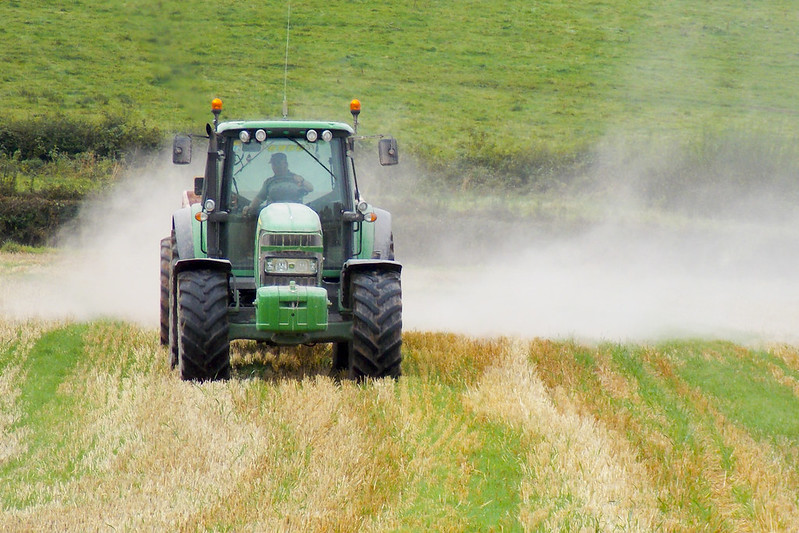 Photo courtesy of James Anderson95 on Flickr.
Photo courtesy of James Anderson95 on Flickr.
Maximize Micronutrients
Healthy soil consists of organic matter and many minerals, some in minute amounts. Each of these essential minerals is responsible for promoting various aspects of plant and soil health. Here's what these unsung soil heroes do:
- Carbon – the foundation of all life that feeds soil microorganisms which improve plant-soil nutrient cycling and soil structure.
- Calcium – a structural part of plant cell walls. Calcium helps plants regulate cellular processes and contributes to soil alkalinity.
- Manganese – an ingredient in chlorophyll that supports photosynthesis for plant energy.
- Nitrogen – also part of the chlorophyll molecule, nitrogen helps leaves produce the plant's food and gives them a healthy green appearance.
- Potassium – regulates water and nutrient movement within plant structure but also contributes to foliar respiration.
- Phosphorus – an essential contributor to many plant processes, including photosynthesis, sugar and starch conversion, energy transfer, cell division, and more. It is present in every plant cell.
- Sulfur – often considered the fourth essential nutrient (behind N-P-K), it aids chlorophyll and protein production.
An advanced soil test will report these micronutrient levels and any adjustment recommendations. While they occur in small amounts, these elements contribute to specific, vital plant processes that shouldn't be overlooked. If your soil lacks these minerals, supplements are easy to add but do take time to affect.
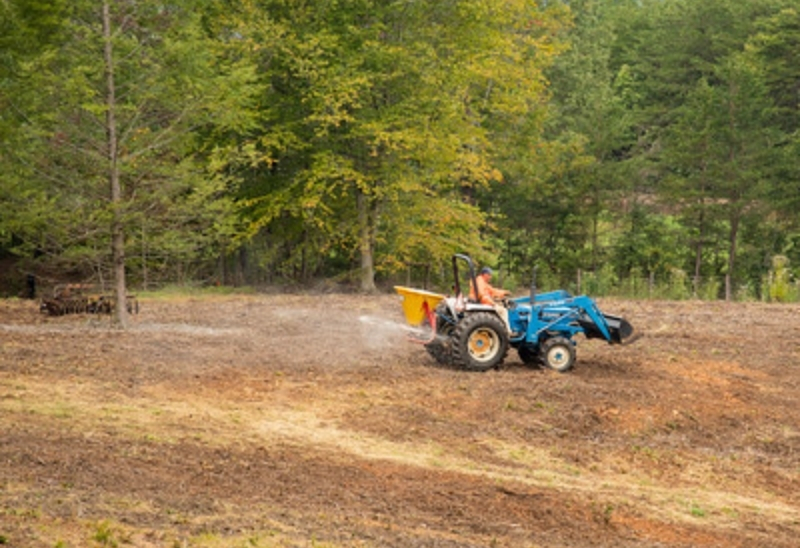 Photo courtesy of Mark Levisay on Flickr.
Photo courtesy of Mark Levisay on Flickr.
Time Your Planting Right For Weed Control
Many food plotters wait too long to plant their food plots. Many crop blends will germinate when soil temperatures are still relatively cool (low 50-degree range). Take advantage of early spring's moisture to trigger germination. Planting cool-season seed early gets it out of the ground quickly and establishes a canopy that limits weed growth.
But before working the soil, you may need to do some weed control. Contact herbicides are only effective when weeds are actively growing (when the air temperature is above 60 degrees). Make sure you allow a few days of good growing conditions before applying. If the resulting weed kill isn't complete, wait a month and respray. Herbicides work best on healthy, un-stressed weeds.
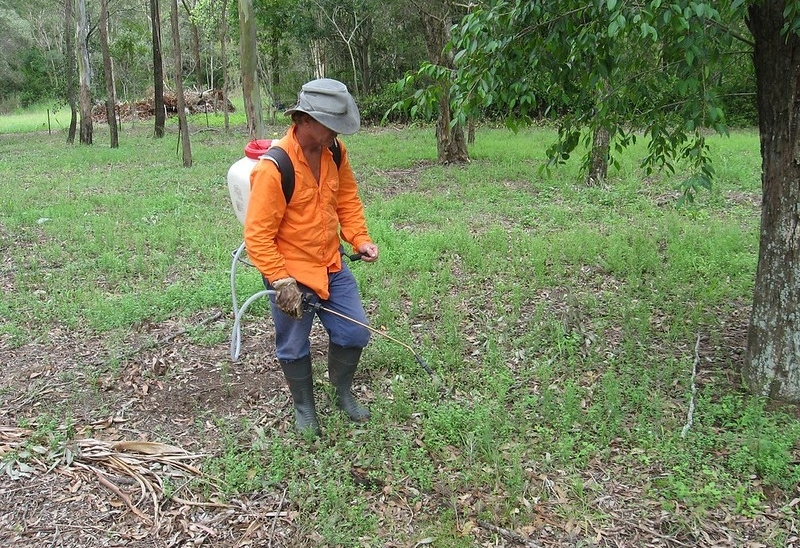 Photo courtesy of Brisbane City Council on Flickr
Photo courtesy of Brisbane City Council on Flickr
.
Mow Right For Height
Since we grow many forages for vegetative production (not a fruit or seed harvest), we want to concentrate the plants' energy on leaf growth. Tender new growth is irresistible to grazing animals! Flowering indicates the start of a plant's reproductive phase and the decline of forage quality. In a food plot, we want to delay this process as long as possible and keep the plant's energy focused on leaf growth. So start your engines.
Removing more than half of a plant's height shocks a plant. So if the plot is 20 inches high, keep your mowing deck above 10 inches. Mowing high spurs faster leaf regrowth resulting in more available forage for your deer.
Clip a newly planted food plot around 60 days after planting. Then mow every 28-42 days, depending on weather and time of year. On established food plots, trim when legumes reach about 25% bloom, then every 28-42 days based on the maturity of the species. Typically, you will cut 2-3 times per season, or up to four times a year in areas with long growing seasons. Frequent, minimal trimming is better for forage growth than a severe one-time cut.
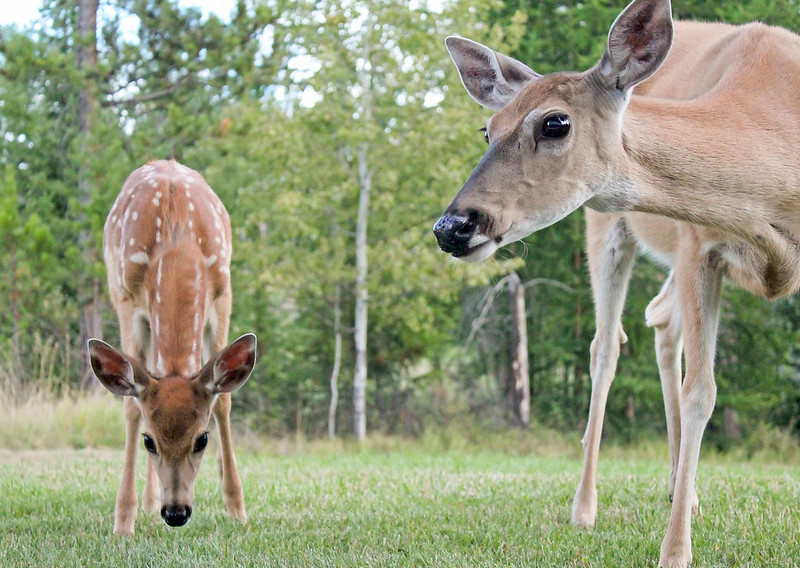 Photo courtesy of HeyFritters on Flickr.
Photo courtesy of HeyFritters on Flickr.
It’s A Journey - Let’s Get Started
Healthy soils support healthy crops. They demand less management from you and provide better nutrition for your deer herds. But healthy soil doesn't happen by chance. It's an ongoing effort to assess and balance the soil requirements of your crops frequently.
Each season, you and the deer remove organic matter from a food plot, which takes away soil-derived nutrients that need to be replenished. There is power in your soil knowledge. Improving your soil is a long game but will increasingly result in better crops and deer populations.
Next Up: Year-Round Nutrition
In article 2 of our “Food Plots for Pros” series, we’ll talk about the importance of year-round food plots and the deer’s changing nutritional needs throughout the seasons. Get ready to become a knowledgeable nutritionist for your herd!
Deer Creek Seed is your resource for soil evaluation, food plot planning, and premium forage seed. Let us help you create a wildlife buffet for all seasons. Improving soils to benefit wildlife is a cumulative process that takes time but pays big rewards. There's no time like today to start!
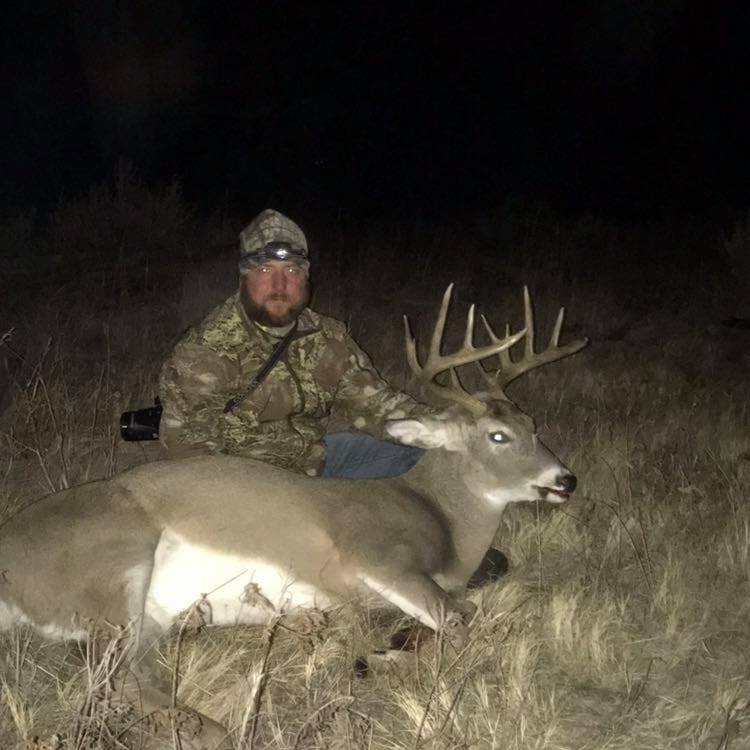 Photo courtesy of Herbie Hansen on Deer Creek Seed’s Facebook Page
Photo courtesy of Herbie Hansen on Deer Creek Seed’s Facebook Page



